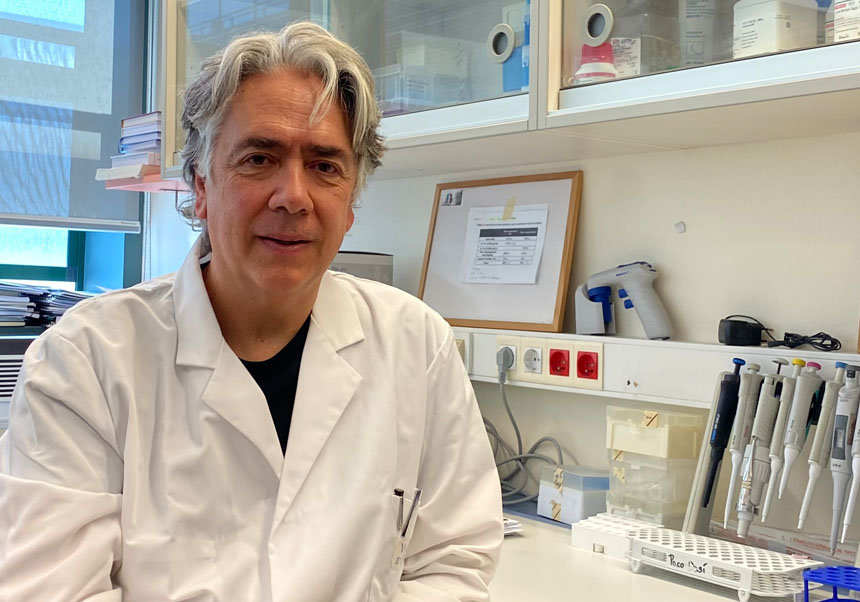Female researchers of the Universitat discover the coexistence of a great diversity of symbiotic microalgae in the lichens
- April 25th, 2017

Female researchers of the Cavanilles Institute of the Universitat de València have discovered the presence of a great diversity of microalgae in the thallus of the lichens. This contribution, which has been published in the journal ‘Plos One’, dismantles the old paradigm that the lichens are symbiotic associations between a fungus and an algae. This concept has been recently modified due to the discovery of yeast in these microsystems. The work opens new evolutionary and environmental research lines and also biotechnological lines.
Traditionally, the lichens have been described as symbiotic mutualist organisms that are the result of a closer interaction between a fungus and at least one photobiont (green microalgae and/or cyanobacteria), which is the responsible of carrying out the photosynthesis and their thallus are considered as particular microsystems. A recent discovery, which deserved the cover of the prestigious journal Science, proved the presence of yeast in the thallus. As a consequence, this put an end to an old paradigm that described the lichens as the result of a symbiosis between a liquenised fungus and one microalgae.
Previous studies carried out by this team of the Universitat de València and leaded by the full university professor of Botany Eva Barreno, detected the recurrent convergence of at least two microalgae – Trebouxia sp TR9 and Trebouxia jamesii– inside the thallus of the lichen Ramalina farinacea, in populations of the Iberian Peninsula, Canary Islands and North America and joined different microscopic and molecular techniques. Likewise, they also revealed that such organisms respond sensitively and differently to the environmental stress; and therefore, their coexistence would be favourable for the lichen to adapt itself to extreme environmental conditions. So, the complete genome of the algae Trebouxia sp TR9, the most resistant one, has been sequenced from the village of Sierra del Toro, in Castellón.
The study that publishes Plos One shows the presence of a staggering diversity of microalgae in these organisms up. Lots of rare or unknown speciments live there and act like primary producers in the microsystems of these symbiosis. “Many of the founded and unknown specimens until now have first-rate biotechnological applications”, emphasises the main researchers of the project. “Even some of them are auxin producers that act like natural biofertilizers”.
The study analyses the diversity of the microalgae as well as their common structure. In other words, their exact location in the thallus of the Ramalina farinacea; and it is possible through a pyrosequencing method 454, which is a technology that allows to determine a large-scale DNA sequence by luminescence, and an accurate protocol ad hoc for the processing of samples of lichens prior to the DNA extraction. The methodology developed has lead, from a unique thallus of lichen, to detect the presence of 31 different species of algae. This facts shows the suitability of the lichen Ramalina farinacea for the study of the diversity of microalgae; and confirms the effectiveness of the method and the technique used by the research group.
The ecological important of the lichens has been proved scientifically since many decades. Apart from being excellent bioindicators of the environmental pollution and the air quality, are also organisms exceptionally resistant to the extreme environmental conditions. So, their ability to colonise different ecosystems is huge. And even they can resist cosmic radiations.
The results strength the concept of the lichens as symbiotic multispecific and self-sufficient microsystems. They are miniature models that make possible the extrapolation of the data to the analysis of the interrelations in the huge ecosystems. This publication consolidates the importance of the study of lichens as source of biodiversity.
The work published in PLOS ONE is carried out by the female researchers of Cavanilles Institute Patricia Moya, Arántzazu Molins, Lucía Muggia and Eva Barreno. And also Fernando Martínez-Alberola of the Trieste University has taken part in this project.
The research, done by the research group “Simbiosis, Diversidad y Evolución en Líquenes y Plantas: Biotecnología e Innovación” of the Universitat de València, has counted on the sponsorship of the Ministry of Economy and Competitiveness (MINECO¬_CGL2016-79158-P) and the Valencian Government through the Excellence Programme in Research PROMETEOII/2013/ 021.
http://journals.plos.org/plosone/article?id=10.1371/journal.pone.0175091
DOI: 10.1371/journal.pone.0175091
Unexpected Associated Microalgal Diversity in the Lichen Ramalina farinacea Is Uncovered by Pyrosequencing Analyses
Short title: Microalgal Diversity in the Lichen Ramalina farinacea
Authors: Patricia MOYA1, Arántzazu MOLINS1, Fernando MARTÍNEZ-ALBEROLA1, Lucia MUGGIA2, Eva BARRENO1
1 Dpto. Botánica, Instituto Cavanilles de Biodiversidad y Biología Evolutiva, Fac. CC. Biológicas, Universitat de València, C/ Dr. Moliner, 50. 46100-Burjassot, Valencia, Spain.
2 University of Trieste, Department of Life Sciences, via Giorgieri 10, 34127 Trieste, Italy.
















